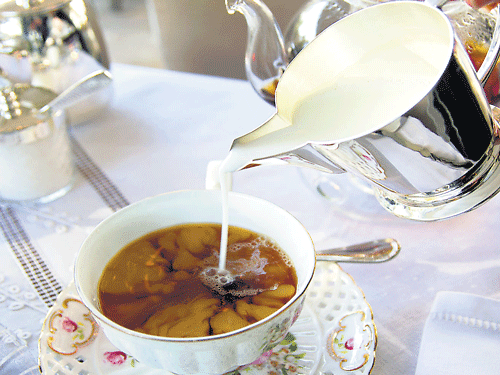
You may be perfectly happy with your tea. Even so, Snigdha Manchanda urges you to move towards a sensory experience and explore the exotic flavours of its many varieties available today.
We drink a lot of tea, but not necessarily the best quality or for the right reasons. Although no one really needs a reason to drink tea, it’s important to know the difference between good tea, which comes with all the health benefits, and what-most-people-think-is-good tea. And of course, the right way to drink it - there are no wrong ways, just good ways and healthier ways.
We all know tea in one avatar that is chai; but there are other avatars of teas too – blue, red, yellow, purple, white, oolong and others. And more so, there are as many ways of growing and preparing tea, as there are ways of brewing and serving it. In India, we are gradually exploring these many avatars of tea along with different health benefits related to drinking tea.
Indian tea consumption has been rapidly growing over recent years, and we even see a rise in the number of people seeking out gourmet teas, infusions and natural tea. Though we are one of the largest producers of tea in the world, we never get to taste the finest of our teas.
Tea-ing off
Let’s start by distinguishing the kinds of the tea available to us today. The most common of them all is, of course, the chai. The tea that is easily available on store shelves is mostly CTC (stands for Cut-Tear-Curl). This is either completely tea dust – or a mix of some tea dust with whole leaf tea depending on the grade of tea. This kind of tea is often on the shelf for a while, and there is no guarantee about its freshness.
For those who kickstart their day with a strong cuppa, this is what you are looking for. The downsides? Since it is tea dust, and it has been stored for a while, this tea doesn’t retain its health benefits, and cannot be re-brewed. Tea does not grow all year round. Freshly plucked tea, of course, has the best flavour.
By now, you are probably wondering what this natural tea is. Isn’t all tea natural? Well, for starters – no. Most tea that is flavoured will have artificial flavours and colours. There are exceptions, of course – these are natural teas. Also, people often think that white tea, green tea and black tea come from separate bushes.
Well, you’ll be surprised to know that they all come from one plant – Camellia sinensis. If you are drinking tea for health benefits, then, having any additives in it defeats the purpose.
So what is whole leaf tea? It is tea that hasn’t been processed excessively and has most of its natural benefits intact. It can be re-brewed two or three times. To get good whole leaf tea, you will either have to look for tea crafted in small batches, or pay a premium for it. Something we think is well worth it.
Buy your tea, and brew it too
Once you have settled on a kind of tea that you like, know the steps to brew it right. A good CTC would, of course, be best as a kadak masala chai. However, if you have the First Flush Darjeeling, boiling it could be the worst thing you can do to it.
Any whole leaf tea should be brewed and not boiled. Take your tea pot, or infuser, put in the amount of tea that you need, and pour in the water later.
Allow it to steep for anywhere between two and five minutes. This depends on how strong you like your tea, and what kind of tea it is. For a delicate white tea, we would say two minutes, green teas and oolongs at three, and black tea between four and five. If you must add a sweetener to it, we would suggest that you ditch sugar, and sweeten with some honey or cane sugar instead.
Inhale, exhale, sip
Now that you have taken the time and patience to find the right pick and brew the tea, you should truly enjoy the culmination of this experience. For starters, you need to taste the tea in its best natural form, with no added milk or sugar. Tasting involves your sense of smell, as much as it involves your sense of taste.
When I taste teas, it’s a meditative practice. It requires me to slow down and focus all energies on the few seconds when the tea is rolling on my palate. It’s a process to isolate the flavour notes ranging from the front of the palate to the back, culminating in the finish. You will then realise why we suggest that you should drink tea without milk, sugar or any artificial flavours.
Explore beyond chai
If you are further inclined to discover other kinds of tea, to tell the difference between white and green and the many others in between – you might want to attend a guided tea-tasting. A guided tasting is usually conducted by a tea sommelier. A guided tea tasting is similar to a wine appreciation, you experience tea like it should be, discover variety and enjoy the good stuff – in this case some fine teas.
A guided tasting is a sensory experience more than a learning. You learn about tasting notes, food pairings, and the different meaning it has for different cultures. For example, did you know that the Singpho tribe in Assam bundle up tea and chew it? There could be even more elements than just a traditional tasting involved, you could possibly learn to make your own blend or hand-craft tea bags.
Now that you can tell your CTC from whole leaf tea, I hope that you explore and find a brew that really resonates with you.
(The author is a certified tea sommelier & founder, Tea Trunk)